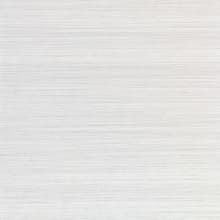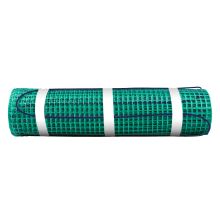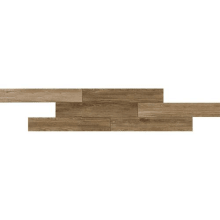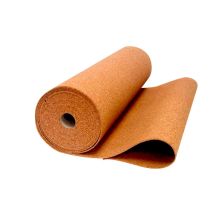Kitchen Flooring Guide
Stylish, durable, and comfortable. Whether remodeling or home shopping, don't overlook the kitchen floor.
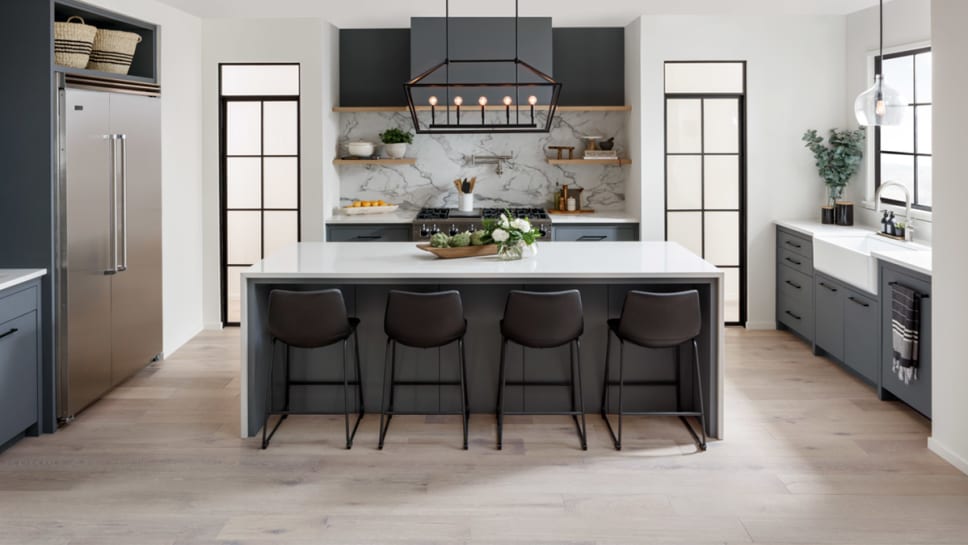
Daily life can get pretty messy for the kitchen floor. Dropped food, muddy paws, and the occasional pull of gravity on a heavy cooking pot will result in wear and abuse on the floor surface. When it’s time to refresh the kitchen floor, there are many options to choose from to ensure a long-lasting result.
What Should You Look for in a New Kitchen Floor?
There are many kitchen flooring types to sort through as you shop for a new home or plan a remodel. A few key features stand out when determining the best kitchen flooring for your household.
Here are the top four features to look for in the best kitchen flooring:

Durability
The kitchen is one of the most popular rooms in the house, attracting visits from everyone who lives there, and their guests, too. That creates a lot of extra foot traffic, and the potential for more dropped silverware, spilled drinks, and cooking accidents.
Heavy kitchen appliances, such as freestanding dishwashers, ranges, or the refrigerator, can leave dents and scrapes while moving, or over time on softer floors. Harder kitchen floor materials are better able to handle even the most basic kitchen flooring requirements. Look for durable kitchen flooring that can stand up to stains, scratches, and water or other moisture.

Comfort
Considering how much time people spend in the kitchen, whether standing to socialize or busy cooking or cleaning, it’s important to remember that many kitchen activities happen on your feet, on the go. This can create stress and strain on muscles and joints in the feet, ankles, legs, and lower back.
There are a variety of kitchen flooring options that are hard enough to be durable and still remain comfortable after standing or walking on them for hours at a time, such as preparing a meal or entertaining. Some are naturally warmer to the touch, while other kitchen floor materials can be very cold under bare feet without the help of area rugs or radiant heating systems.

Style
Personal preference plays an important role when selecting the best kitchen flooring types. Each different type of flooring has its own colors and textures, which would have to complement the design style of the rest of the kitchen or possibly other nearby rooms if the kitchen flooring will be installed in a larger area.
Paying attention to the current kitchen flooring trends will help narrow down the perfect look that you want to incorporate into your own kitchen style.

Maintenance
It’s a good idea to find a kitchen flooring type that will provide the look you want with the level of upkeep effort your lifestyle allows you to invest. It may take a little work for a floor to achieve a perfect high shine, and a floor with a rough, natural stone surface won’t look quite as clean and glossy as tile, no matter how much time you spend polishing.
A floor with a strong wear layer can resist stains from a dropped drink or dinner plate, in contrast with a soft-surface flooring that might soak up the mess. Some kitchen flooring is completely waterproof and comes clean with mild soap and a quick wet mop, while others will warp or stain if water sits on the surface too long.
Another point of concern with some floors is UV lighting exposure. Too much direct sunlight can fade the color from different flooring types, so if you’re looking to refresh the kitchen floor with plenty of access to sunlight, take note of any required extra maintenance or care to preserve the color and pattern.
Kitchen Flooring Options
The type of flooring that works best in your home depends on your preferences as well as the room design. Keep the key features in mind as you consider the different floor types.
The best kitchen flooring options include:

Tile Flooring
One of the most popular kitchen flooring trends is tile. Tile is made of kiln-fired clays and can be finished in any size, shape, color, or visual effect. Porcelain tile is processed to make it stronger and less porous than ceramic tile, however, both types make effective waterproof kitchen flooring.
Kitchen tile can be found in different textures and surface finishes to imitate wood or stone floors. While dropping heavy objects onto tile floors is a good way to break them, tile floors are strong and resist scratches and denting. While it can be cold to the touch, tile flooring is heat resistant and can tolerate underfloor radiant heating systems to make the kitchen floor comfortable to walk on.
A wet tile floor can be slippery, but will not be damaged by standing water as it dries. Slip resistant tiles are available to make a tile floor safer for everyone. Tile floors are easy to clean and maintain, with water and mild soap working to tackle most messes. It is advised to reseal tile floors every 2 to 4 years to ensure the best results over time.

Stone Flooring
Durable stone flooring is available in flat tiles of different sizes and shapes. It shares many traits with ceramic or porcelain tile floors, from installation methods to the natural resistance to water and scratching damage.
Stone flooring in the kitchen holds a high resale value because of the look and durability. It is ideal for kitchen flooring because it is naturally waterproof and has a unique design appeal. No two pieces of stone tile will ever have the same pattern or colors, which can add interest and style.
There are different types of stone popular for kitchen flooring.
- Slate tile is available in many colors, with slip resistant surfaces, and offers a durable, textured floor.
- Granite tile is usually found in a mix of darker colors. It offers a smooth and glossy, high shine polish and a hard, scratch resistant surface.
- Marble tile offers a variety of shades with unique colorways brought out in dramatic marble veining. It holds a high shine and can be used on the floor, the countertops, the walls, or all three to great effect.
- Travertine flooring provides a smooth, non-slip stone surface. It is available in many finishes and color choices.
Stone is available with different textured surfaces, some smooth and glossy, and others rough and porous, with ridges and bumps. The more uneven the texture, the more difficult it can be to clean out dirt and grime over time, which may require more specific care than just a wet mop. Stone kitchen flooring will require regular reapplication of sealant to help prevent this.

Wood Flooring
Wood flooring is a timeless favorite throughout the house. It has seen a particular resurgence for kitchen flooring thanks to modern sealants that add to both the water resistance and general durability of natural wood.
There are different types of wood flooring suitable for kitchen flooring installation, including:
- Hardwood flooring is natural wood flooring. For kitchen installations, make sure hardwood floors are professionally sealed and as water resistant as possible. A hardwood floor can be refinished as needed, and is capable of decades of use when properly installed and maintained.
- Engineered wood flooring has the look of hardwood, with added strength from a plywood and resin core. These planks offer a surface veneer of your choice of real wood over a core foundation of durable layers of plywood. The layering of materials makes the engineered hardwood floor more resistant to the warping effects of humidity and moisture.
- Bamboo flooring has the natural strength of the bamboo tree and can be manufactured to be more resistant to moisture. The more sustainable bamboo flooring has no natural grain like hardwood flooring and should not be refinished, but with proper installation and care it will still provide years of reliable, stylish use.
The important thing to keep in mind with any kind of wood flooring is that this flooring type is not waterproof. It will require special cleaning care with minimal exposure to water. Any spills or accidents should be promptly cleaned off of a wood surface floor in the kitchen.

Laminate Flooring
Laminate flooring is a scratch resistant kitchen flooring that offers multiple layers of hardening resin and fiberboard or plastic pressed together to create a hard, sturdy core. The boards are water resistant but will warp if exposed to standing water too long. It is available in planks, like hardwood or tile, but has an interlocking design that allows a laminate floor to “float” over an existing floor.
Basic care for laminate flooring is a dust mop or vacuum. Harsh chemicals or scrubber brushes can etch or warp the edges of the boards and weaken the surface. A laminate floor with a high AC rating can stand up to the pitter patter of pet claws and can seal out dust to prevent the flooring underlayer from collecting everything the vacuum misses.
The construction of laminate planks also helps them resist the damaging effects of UV lighting. A well-protected textured image layer can make a laminate plank appear indistinguishable from wood or stone designs. Properly cared for, laminate flooring will look much the same from the day after installation until the day you decide to update the design.

Vinyl Flooring
Available in planks or tiles, vinyl flooring can be glued down, or placed over an existing floor with easy click-lock installation. Luxury vinyl flooring offers a hard, resilient floor surface that helps absorb sound in a busy kitchen. It is 100% waterproof because it is made entirely of fiberglass and other synthetic materials.
Thanks to the plastic vinyl surface layer, some vinyl flooring can hold a high shine. The design layer is protected by one or more layers of polyurethane to protect the print image and can produce a textured surface to resemble wood grain, stone, or tile. The long lasting surface is fused to the fiberglass core to add strength.
Because of the way the planks are made, vinyl planks retain their strength without losing too much cushioning. Dropped items are less likely to break and they will leave no dent or chip in the floor surface. A quality acrylic finish over luxury vinyl planks can provide an extra protective barrier to add shine and make it even more resistant to scuffs.

Cork Flooring
New and improved cork flooring is a favorite for households interested in going green with sustainable materials. Cork is softer under your feet, composed of recycled, ground-up cork and resins that add a slight spring to the step. It can be found in tiles or plank shapes, ready to glue down or snap together.
Cork flooring is water resistant, but should be kept dry as much as possible. Spills should be cleaned up quickly to prevent staining. It will absorb sound, which makes it a good choice for open spaces, such as open floorplan kitchen and living room areas.
The resins help keep the cork resilient, but cork flooring can be scratched by heavy objects, such as kitchen appliances. Available in tans, browns, and neutral gray tones, cork flooring can bleach out when exposed to direct sunlight. Cork is a comfortable, warm, easy to maintain kitchen flooring material with a functional, low-key appeal.

